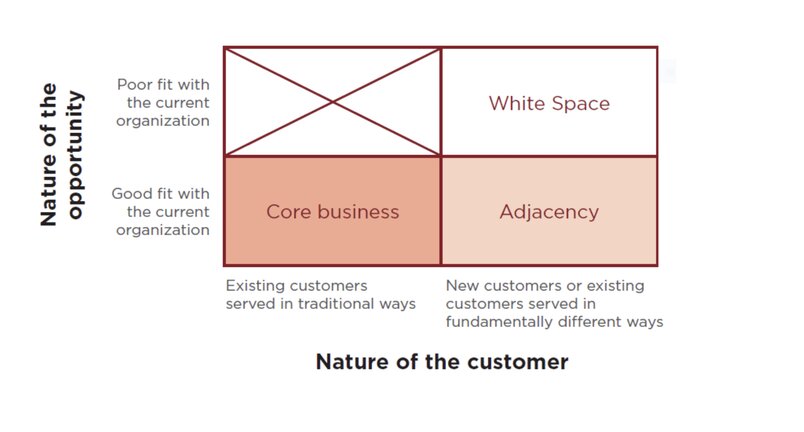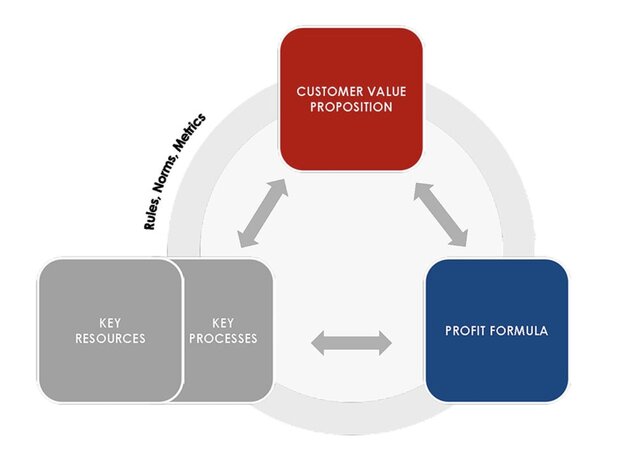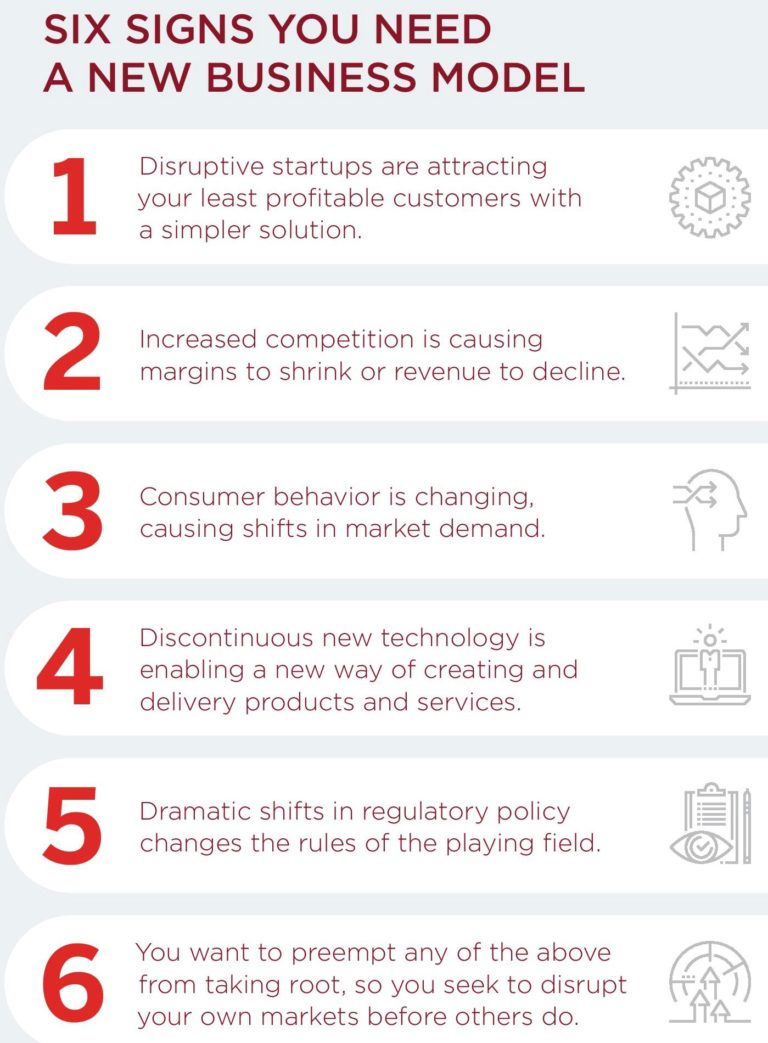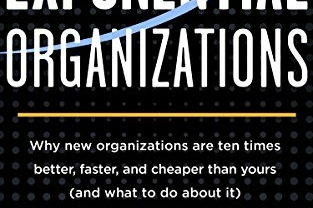A business model is a representation of how a business creates and delivers value for a customer while also capturing value for itself, doing so in a repeatable way.
In Reinvent Your Business Model: How to Seize the White Space for Transformative Growth, co-founder and senior partner of the strategy consulting firm Innosight, Mark W. Johnson provide a guide for turning business model innovation into a managed process and a more predictable discipline. The book is the subject of the Harvard Business Review article, “Reinventing Your Business Model,” that Johnson co-wrote with American academic and business consultant, Clayton Christensen.
Business management at its best is so much more than executing already-existing business models—it is the art and science of exploring and discovering disruptive new ones that ensure a future of sustained growth and longevity.
In this revised, updated, and newly titled edition, Johnson provides an eminently practical framework for understanding how a business model actually works. Identifying its four fundamental building blocks, he lays out a structured and repeatable process for reinventing an existing business model or creating a new one and then incubating and scaling it into a profitable and thriving enterprise.
Favourite Takeaways: Reinvent Your Business Model by Mark W. Johnson:
Knowing how to build (or rebuild) a seamless business model is what allows the strongest leaders to stave off disruption from their competitors while driving innovation in their own enterprises.
Essentially, a business model can be broken down into four distinct elements:
- A value proposition, which is to say, a product or service that does a job that customers need and that can be supplied to them at a price that they can afford.
- Resources, which are the people, technology, facilities, equipment, funding, branding, and raw materials required to create the product or service and deliver it.
- Processes, which are the means that people in organizations develop to produce and deliver products in repeatable, scalable, and sustainable ways.
- A profit formula, which is how the company creates value for itself and its shareholders. It includes a revenue model (how much money can be made by selling how many products at a certain price), a cost structure (direct costs, overhead costs, and economies of scale), a target unit margin (how much must be netted from each transaction to achieve profitability), and resource velocity (how quickly resources need to be used to achieve profitability; for example, lead times, throughput, inventory turns).
Business Model vs Digital Transformation
Digital transformation and business model innovation are not necessarily the same things.
It’s important to remember that simply adding a digital component to an existing business does not fundamentally transform it. New technologies can enable business model innovations, but the technology is just a means, not an end.
Absent a compelling customer value proposition, a powerful profit formula, and a set of key processes and resources that deliver the right product or service to the right people in the right way, even the most astounding new technologies can fail to gain traction in the marketplace. But with a fresh new business model, even a fully mature product can achieve dramatic new growth.
White Space (uncharted territory or an underserved market.)
Refer to the range of potential activities not defined or addressed by the company’s current business model; that is, the opportunities that exist outside its core and beyond its adjacencies and that require a different business model to exploit.
“White space is a subjective valuation: one company’s white space may be another company’s core. What matters is that it describes activities that lie far outside a firm’s usual way of working and presents a series of unique and perplexing challenges to that organization. It’s an area where, relatively speaking, assumptions are high and knowledge is low—the opposite of conditions in the company’s core space.”

The Four-box framework.
Provides the structure needed to reveal and categorize all the issues that must be addressed before a company can confidently venture into the low-knowledge, high-assumption environment of its white space. Employed methodically, the framework will give you a road map to new possibilities for innovation, transformational growth, and renewal that you never thought you could capitalize on before.
The Four Key Elements of a Business Model

Customer Value Proposition
Every thriving enterprise is propelled by a strong customer value proposition (CVP)—a product, service, or combination thereof that helps customers more effectively, conveniently, or affordably do a job that they’ve been trying to do. The CVP describes how a company creates value for a given set of customers at a given price.
Profit Formula
The profit formula defines how the company will capture value for itself and its shareholders in the form of profit. It does this by distilling an often-complex set of financial calculations into the four variables most critical to profit generation: revenue model, cost structure, target unit margin, and resource velocity.
Key Resources and Processes
They are the means by which the company delivers the value to the customer and to itself. These critical assets, skills, activities, routines, and ways of working enable the enterprise to fulfill the CVP and profit formula in a repeatable, scalable fashion.
The customer rarely buys what the company thinks it is selling him. – Peter Drucker
Business Model Innovation
Seizing the white space requires new skills, new strengths, new ways to make money. It calls for the ability to innovate or reinvent the very theory of the business itself—a process that is known as business model innovation.
It’s the same each time with progress. First they ignore you, then they say you’re mad, then dangerous, then there’s a pause and then you can’t find anyone who disagrees with you.—Tony Benn
Markets are born, grow, change, and die. Customer demand inevitably shifts, too, as do the jobs customers need to get done. To stay relevant, you must remain vigilant for these changes and devise new ways to address them. In the early stages of market development, these changes can often be successfully addressed by sustaining innovations—new products, services, or features—that fit well within your existing business model.

HOW DIGITAL TECHNOLOGIES CAPTURE VALUE
While any technology without a viable business model can lead to a commercial dead end, digital technologies do drive the formation of certain kinds of business models, creating value in broadly predictable ways. While vastly enlarging our ability to capture, process, store, and transmit data, the business models that they enable fall under four broad categories:
- E-commerce.
This category includes everything from Warby Parker, which sells designer eyeglasses to online consumers, to Dow Corning’s Xiameter, which sells silicone to manufacturers. - Digital platforms.
These models allow value-creating interactions between producers and consumers. Think of Airbnb, which connects people who have spare rooms with people who are looking for a place to stay, or Uber or Lyft, which connect car owners with people who are in the market for a ride. Or for that matter, this category can include Salesforce.com, Adobe, and now Microsoft, all of which stream programs and applications to subscribers via the cloud. - Models that turn data into assets.
These business models use data management and analysis to derive value from access to, or ownership of, large volumes of proprietary data. Think of Google’s targeted advertising; the Weather Company (now a subsidiary of the Data and Analytics business unit of IBM), which delivers 26 billion weather forecasts a day to its subscribers; or GE’s Predix, an internet-of-things setup for industrial machinery. - Automation-enabled services.
This category of business models harnesses software to do jobs that were formerly carried out by people—everything from the robots that pick and pack in Amazon’s warehouses to the autonomous cars that Uber hopes will eventually superannuate its drivers.
Innovation is risky but it’s not random. Innovators have a disciplined invention process. They may not be able to articulate it, and sometimes the Eureka! moment happens in the shower, but it stems from a disciplined process.—A. G. Lafley
BUYING NEW BUSINESS MODELS
Some companies are legendary for their acquisitive prowess. For a time, GE acquired dozens of companies a year. Cisco has made more than one hundred acquisitions in its thirty-two-year history. Most acquisitions are pursued because they have the resources and capabilities that can be integrated into the buyer’s existing business model. Acquisitions can also be a way to quickly spur sales and develop reputations. They can allow mature organizations to brand an emerging company as “most likely to succeed” or steadily pursue sound strategic growth.
It’s the same each time with progress. First they ignore you, then they say you’re mad, then dangerous, then there’s a pause and then you can’t find anyone who disagrees with you. —Tony Benn
Business Model Innovation is most successful
- In cultures of inquiry, environments in which new value propositions and ideas for new business models are met with interest and encouragement
- When managers recognize that a nascent business opportunity, no matter how different from the core it is, might be the key to the next big thing
- Where thinking big about ambitious opportunities is balanced by starting small and slowly incubating new ventures, testing assumptions, and making adjustments
- With a structured approach that embraces the high degree of uncertainty but minimizes the risk
Need help with developing a digital strategy for your business? Get in touch.


